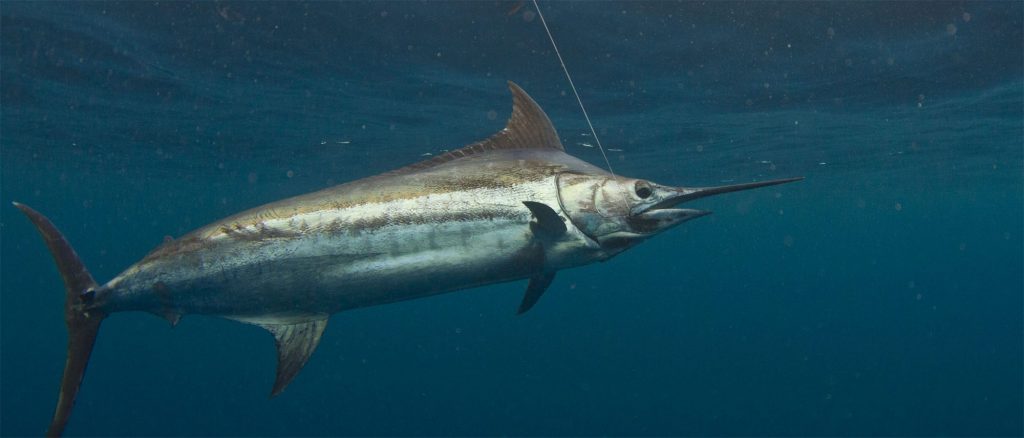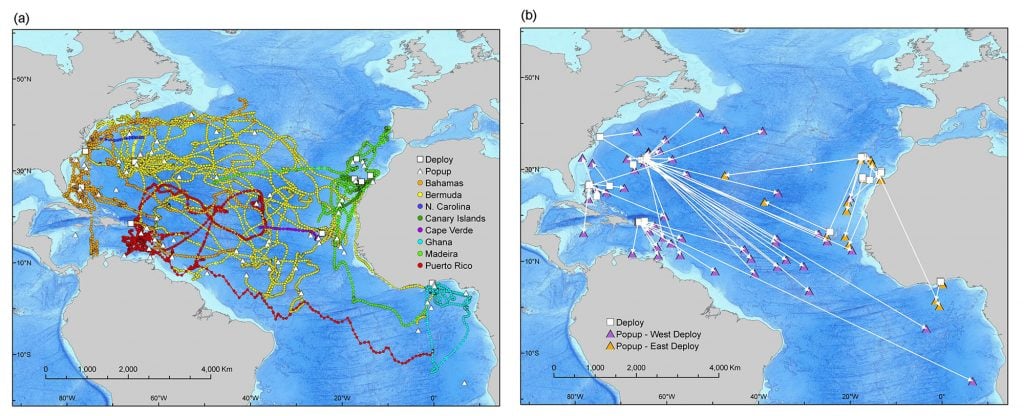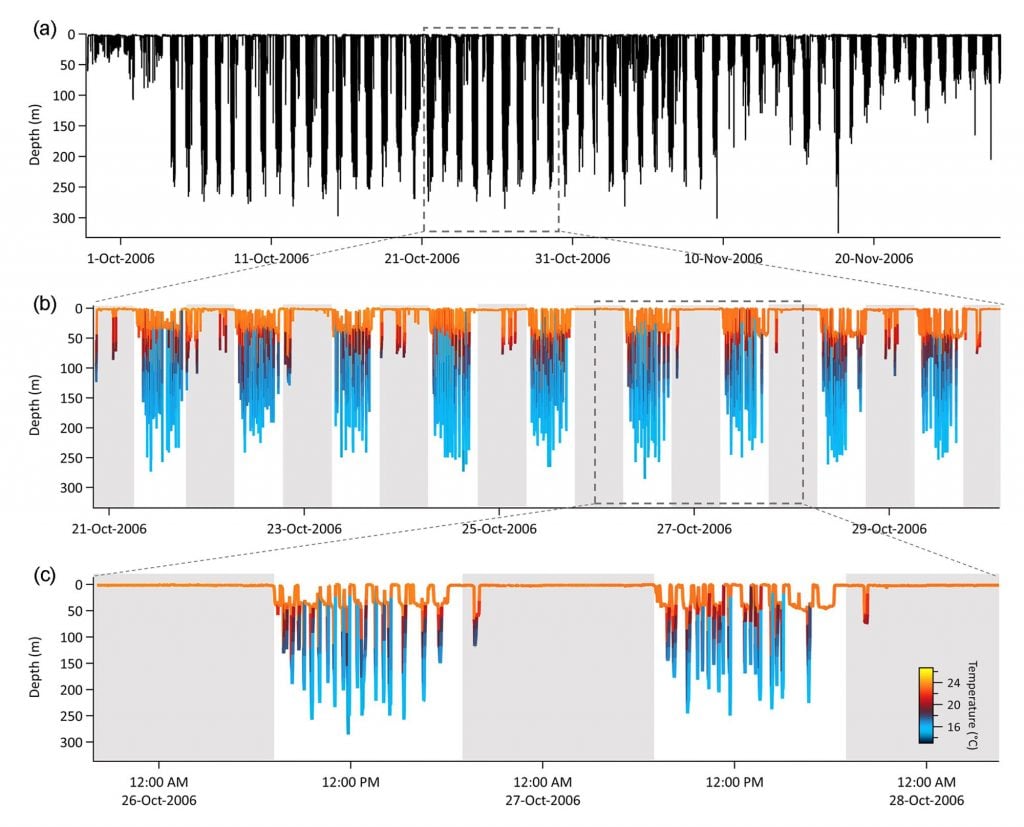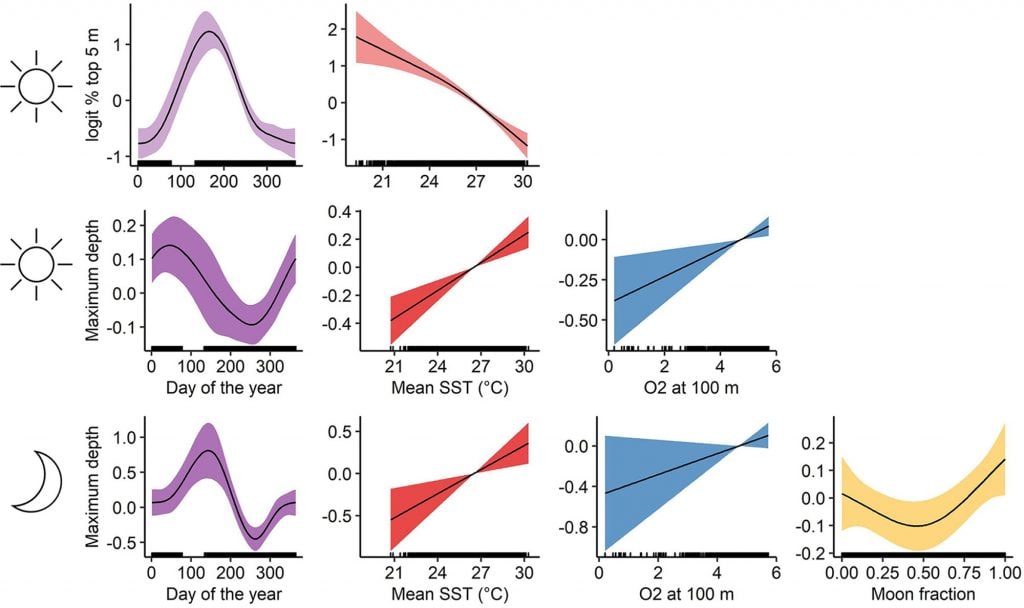New Publication on North Atlantic Blue Marlin

We are extremely pleased to announce another scientific journal article has recently been published using IGFA Great Marlin Race data, this time in the prestigious ICES Journal of Marine Science. This publication comes from Dr. Barbara Block’s lab at Stanford University and is led by Dr. Samantha Andrzejaczek. The study used data from 66 pop-up satellite tags deployed on blue marlin across the North Atlantic to explore their daily and seasonal habitat use.

The research team investigated diving behavior and horizontal movements of individual blue marlin to explore how connected blue marlin populations are across the North Atlantic, seasonal patterns of movement, and diving behavior relative to environmental conditions. Lastly, the team discusses future implications for blue marlin, in a conservation and management context, as the ocean continues to change.
Results of the study revealed blue marlin in the North Atlantic reside in warm surface waters and display what is known as normal diel vertical movement, which means they undertake deeper dives during the day with little diving occurring at night while the fish remains near the surface. Blue marlin are visual hunters, thus it is predicted that diving deeper during the daylight hours is a foraging strategy to optimize their predatory capabilities. Daytime dives expose blue marlin to cooler water at depth before they return to the surface to rewarm and reoxygenate, a process known as bounce diving. One tagged blue marlin in the study expanded the known depth range for this species with a dive to 984 meters.

Seasonal and diel habitat use of blue marlin Makaira nigricans in the North Atlantic Ocean

Seasonal patterns in diving behavior and horizontal movement were also found. These patterns are likely linked to seasonal variation in environmental conditions and/or prey distribution. Higher sea surface temperatures increased the likelihood of deeper daily maximum depths suggesting warmer waters may facilitate marlin’s ability to maintain body temperature and enable them to stay in deeper,colder waters longer. It is also possible that the warmer surface waters allowed prey to distribute deeper resulting in the marlin foraging at deeper depths. Seasonal patterns in horizontal movement revealed a shift offshore and to lower latitudes from summer to winter with marlin following consistently warm surface waters (>22.9℃) as the seasons change.

Blue marlin were found to migrate widely across the Atlantic, showing connectivity between the eastern and western Atlantic as well as between temperate and tropical regions. Blue marlin movements varied considerably with some fish traveling long distances across the Atlantic, while others remaining in a relatively small region such as one fish that remained near the Bahamas for 203 days. The interconnected nature of blue marlin across the Atlantic combined with known lack of genetic variation suggests an Atlantic-wide single population.
Finally, the research team suggests that information collected in this study can be used to properly inform dynamic ocean management strategies that would limit overlap of commercial operations that incidentally catch billfish. The authors also suggest that, due to the wide-ranging movements of blue marlin, static marine reserves would do little to conserve billfish populations. As the ocean continues to change, billfish must adapt, and the results of this study suggest the changing climate will result in a complex shift in the three-dimensional distribution of blue marlin due to their physiology and the distribution of prey.
The IGFA would like to commend the Stanford team on their impressive research and we look forward to adding more data to the IGFA Great Marlin Race database to facilitate critical research in the ongoing efforts to conserve and manage billfish species into the future.
For more information, check out the full article here: Seasonal and diel habitat use of blue marlin Makaira nigricans in the North Atlantic Ocean
The IGFA Great Marlin Race, presented by Costa Sunglasses, is a research collaboration between IGFA and Stanford University and is sponsored by AFTCO, Bass Pro Shops and Cabela's Outdoor Fund, EdgeWater Boats, and Release Boatworks.
